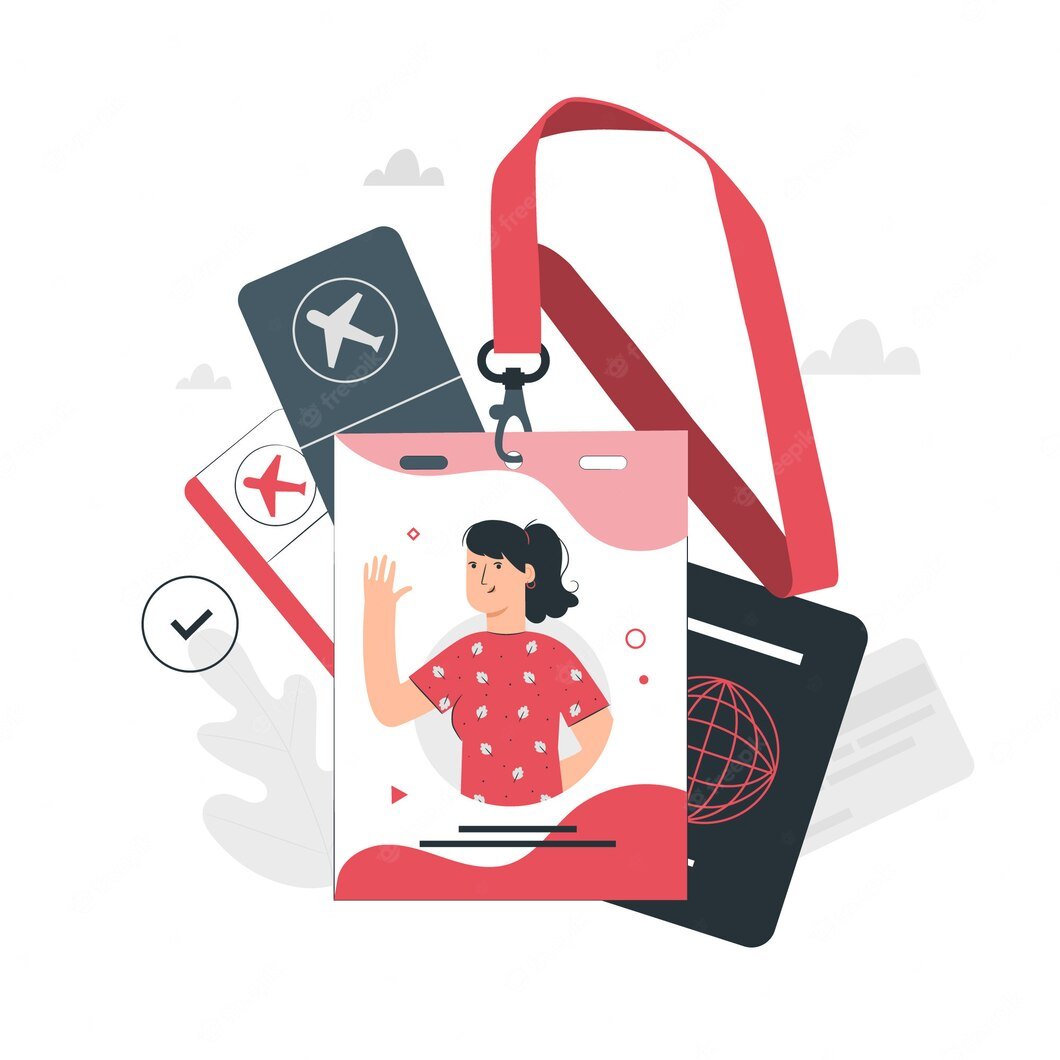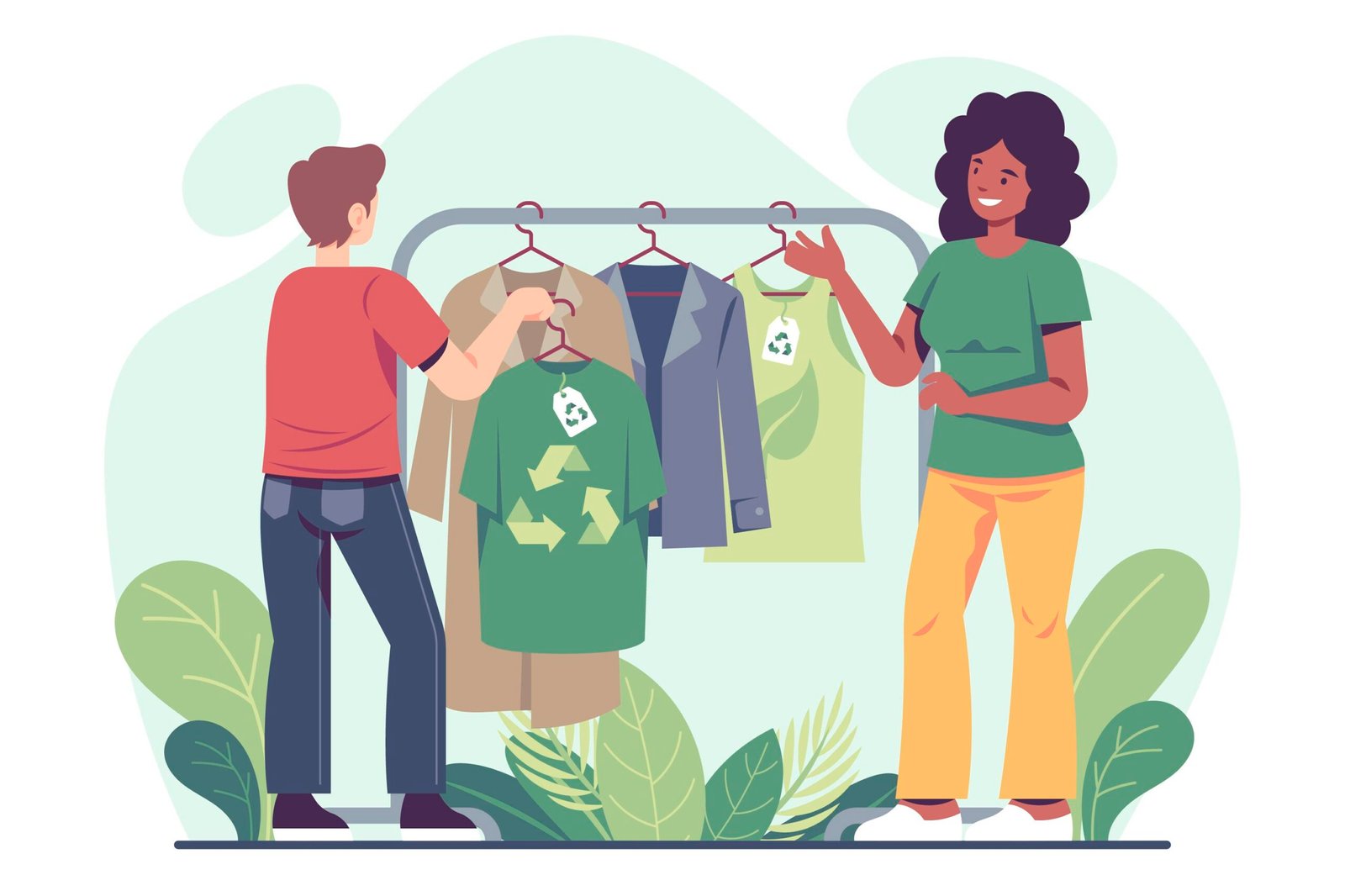What is A Lanyard? Everything You Need to Know!
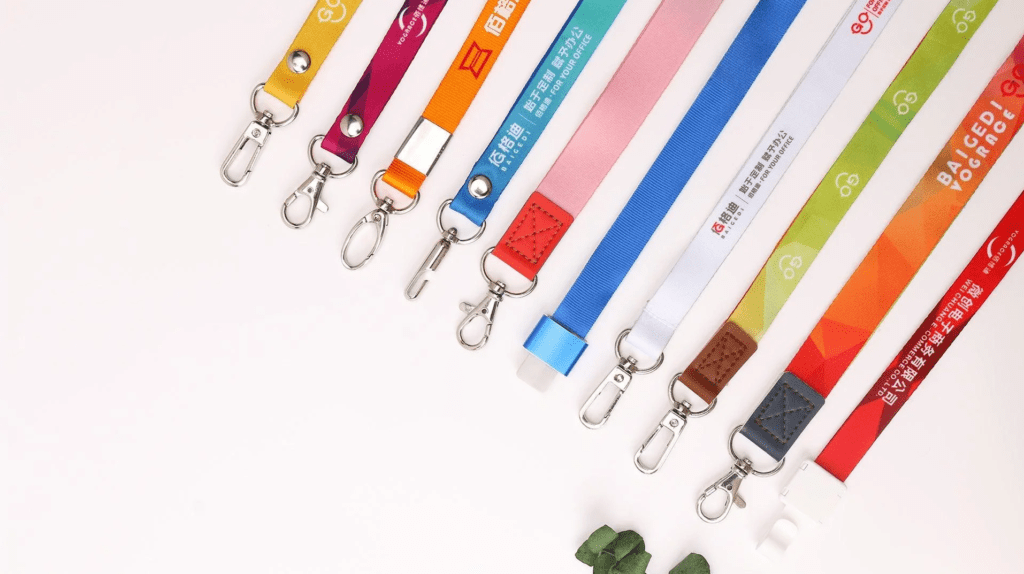
A lanyard is a cord or strap with one end attached to an object while the other is looped around the wearer’s neck. Lanyards have evolved with their applicability in events, corporate settings, conventions, access passes, display identification cards, etc. This worldwide acceptance was enabled by the attachment of personal expression, whereby individuals can muster their design ethos through custom lanyards that carry their preferred logo, colors, patterns, slogans, and symbols that depict their interests. You might have come across some tiny piece of customized neck ribbon, neck strap, key ribbon, or event string around some of your coworkers’ necks and you are looking to understand what that means; Those are customized lanyards and this article brings to you everything you need to know about lanyard and its significance in today’s world.
Materials Used in Making Lanyards

Lanyards are made with various high-quality materials selected based on the customer’s preference. Below are some prominent materials used in manufacturing lanyards.
1. Cotton
Go for cotton materials If you love to have your customized lanyard that doesn’t stick to your skin. Apart from the nonsticky nature of cotton materials, they offer a sense of comfort and are compatible with full-color heat transfer printing. You can wear this material year-round since it can trap air between its threads. On top of this, cotton material lanyards are always durable and have no inherent odors.
2. Nylon
With the smooth surface, the materials allow the manufacturing of large-scale custom lanyards in bulk with silkscreen printing. Nylon is a thin, light fabric made from soft, synthetic, glossy materials compacted into string durable materials. This is the best material for people looking for rigid, deformable custom lanyards with vibrant hues.
3. Soft Satin
Soft satin material is an excellent choice for companies, schools, and businesses looking for ultra-weave lanyards that can carry their designs, logos, and colors smoothly. Additionally, soft satin materials woven lanyards can be washed without any fade in the designs and color scheme. The satin lanyard can maintain its pristine appearance for years with proper care and maintenance.
4. Polypropylene
Polypropylene material is a good choice for one-time use custom lanyards for company event conferences and trade shows. They are less durable and often the most common due to their affordability and cheapness. Polypropylene lanyard is a fantastic promotional accessory for all sort of businesses and organizations with the conviction that they will arrive on or before the scheduled deadline.
5. Tubular Polyester
These materials are weaving polyester thread that is fused into a tube-like structure. Tubular polyester is suitable for companies or individuals who are looking to have an opti-weave custom lanyard that is made with screen printing.
6. Flat Polyester
Flat polyester is the perfect choice to make lanyards that are suitable for sports or outdoor activities. The comforting nature of this type of lanyard makes it the ideal one for all-day long wearing without any discomfort. They are also suitable for simple custom imprinting that doesn’t require heavy color and designs.
7. Polyester Twill
This is the most notable choice of materials used to make bulk custom lanyards for school ID card holders, business meetings, event conferences, and others. Polyester Twill is a two-sided diagonal texture that is made from polyester fiber; this quality makes it the ideal material for the production of custom imprinted lanyards that are hot stamped with a logo and designed for short periods of usage like trade fairs, 3-day workshops, and other.
8. Bamboo
If you are running a sustainable, inclined business model and are in love with eco-friendly products, then lanyards manufactured from bamboo fibers should be your best option. Due to their eco-friendliness, lanyards manufactured from these materials are durable and comfortable for long-term usage.
Key Part of a Lanyard

The lanyard’s primary component features a strap attached to your neck and a safety breakaway that displays the ID card or badge on the other end. The two most important parts of a lanyard depend on the customization style and design concept you want to choose.
1. Lanyard Attachments
When getting your lanyards, one of the most critical decisions is the type of attachment you want. There are various attachment options you can pick from, with each carrying its distinct characteristics.
- Swivel Hook: There are two most common types of swivel hooks. The first one is the most basic hook with thumb grip clips, enabling easy clipping and unclipping of your ID card and other accessories. We also have an attached swivel hook with a crab-like clip, allowing snap support functionality for your badge.
- Split Ring: These are mainly used to hang keys or small items. A split ring is very durable and inexpensive. Delete it’s fine finished. Its vivid resemblance with key rings popularizes it and makes it suitable if you are looking for an attachment to hold multiple items together with one grip.
- Bulldog Clips: Bulldog clip is characterized by their spring-loaded mechanisms that securely hold multiple items together and allow easy detachment. If you are looking for the best attachment to pick for your lanyard, make sure to go for the bulldog clip attachment.
2. Safety Breakaways
You might be wondering what’s the primary uses of the lanyard closure that’s laced around your neck. In a more straightforward form, that’s a safety breakaway that offers built-in safety protection, which automatically releases and separates you from the lanyard in the case of an emergency, accident, or any other potential threat to life. A safety breakaway further enhances the functionality of a lanyard and allows its applicability in various settings, especially in factories where they use heavy machinery.
Practical Uses of Lanyards

A lanyard is an incredibly versatile accessory that fits into a wide range of usages across myriads of settings. The following are the most common uses of lanyards:
1. Medical and Healthcare Facilities

In this ultra changing healthcare sector that require a smooth running of the operation and maintenance of the professional standard. Lanyard is an essential component that helps significantly in patient interactions, medical practitioners’ identification, access control, emergencies, and others.
2. School and Educational Institutions

The advent of cheap custom lanyard has opened the gate for the mass adoption of lanyards in school settings, with many schools tilting towards the use of customized lanyard that carries the school details, including their name, logo, and colors to be worn by their students. This helps with holding school ID cards and displaying bus passes and library cards.
3. Office Identification and access control

There is growing interest in the adoption of lanyards around the office premises. It’s a culture that’s now enshrined among everyone who sees it as a more professional approach to displaying ID card, access card, and access pass to the secured area in the building. This is a more advanced and utilitarian means than the old pins and clips growing rampant in the office space.
4. Events and Concert

Lanyard has been the most accessible means of identifying and interacting with attendees, staff, and volunteer at conference and festivals. It also serves as a security measure that event organizers use to distinguish those who can gain access to the event and those who can not.
Role of Lanyards in Safety and Security

Lanyard is a crucial component of personal protective equipment that mitigates the risk of injury and accident for workers who perform life-threatening tasks. The prominent uses of lanyards in saving lives can be linked to the uncanny durability of their manufacturing materials, such as nylon and polyester.
1. Occupational safety (construction, manufacturing)
A series of occupational hazards in the construction and manufacturing industries have reinforced the importance of lanyards in this space. For example, in the construction industry, where workers have to climb high-rise buildings, the lanyard prevents falls by providing a secure connection between the worker and the railing. Additionally, reflective or glow-in-dark lanyards, especially those made with nylon materials, are best to improve visibility during night shifts and in case of emergency.
2. Prevent loss and theft
Lanyards also gain prominence. In the context of loss and theft prevention, the occurrence of having your items stolen in a crowded area such as events, shows, and other festivals can be significantly reduced since you can attach your items like keys, mobile phones, badges, and wallet to a lanyard worn around your neck or wrist.
Factors to Consider When Customizing Lanyards
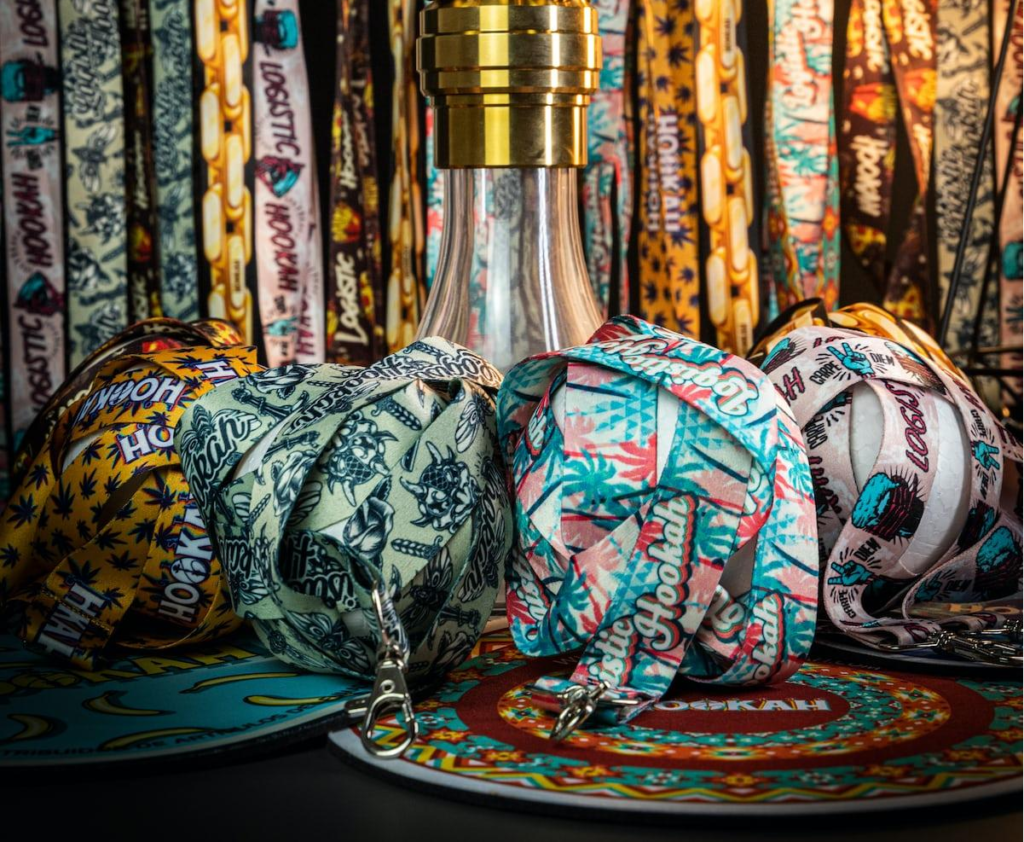
1. Lanyard Materials
Your material choice should align with the overall design specifications you want. Materials are the foundation for the lanyard’s durability, look, and overall feel. Various materials are available for you to pick from, each with its unique features. For example, Cotton materials provide comfort, polyester material is for affordability and versatility, while nylon materials offer smooth finishes and high strength.
2. Width and Length
This determines the visibility of your custom designs. A wider lanyard allows the proper showing of your plans, text, and logos, while a longer lanyard is essential for usability. Shorter lanyards, also known as “short strap lanyards,” are most times used for holding ID cards and access cards. On the other hand, a longer lanyard, also known as a long strap lanyard, can be worn diagonally across the body and is suitable for utility items like keys that would be needed often. The generally accepted standard width is between ⅝ and ⅜ inches. This depends on the lanyard usage and your set objective.
3. Customization/Printing Technique
There are various printing and customization techniques that you can choose from; the most prominent among them are silk screen printing, heat transfer, sublimations, and detailed graphics. Each of these comes with varying detail, color vibrancy, and longevity.
-
Sublimation: This process involves the infusion of inks into the lanyard fabrics, resulting in a full-color design and highlighting all the significant details. This method suits custom lanyards requiring complex graphical designs, photographic elements, and gradient designs. Although this method offers durability and a professional look, it might take longer to finish and be costly.
-
Silk Screen Printing: This is a simple, cost-effective option for customizing lanyards. The process involves transferring ink through a woven mesh screen onto the lanyard fabrics. However, this process might not show off the designs vividly, and it is often difficult to maintain fine finishes.
-
Heat Transfer or Hot Stamping: Heat transfer balances quality and cost. This is achieved by crafting designs onto a transfer paper and then placing the design paper onto the lanyard’s fabrics under heat and pressure to replicate the designs on the lanyard. This is a good choice for a medium-scale budget and will offer you a mid-level vibrancy and color gradient.
4. Colors and Designs
Color selection plays a pivotal role in your custom lanyards’ visual impact and overall effectiveness. Your idea of color should evoke emotions and strike a balance between your brand and the designs. Lanyard comes in various colors, and you might be asked to select anyone to print the details that the customized lanyard materials would carry. The standard lanyard colors include the basic ROYGBIV palette: black, white, maroon, blue, green, violet, purple, grey, and others. There is also the chance to create a color mixture that perfectly depicts your brand’s color orientation.
5. Attachment Option
While customizing your lanyards, your attachment will depend on what your lanyard will be carrying. The bulldog clip is suitable for carrying ID cards, and the swivel hook is a versatile attachment that is great for holding multiple items like keys, phones, and other essentials. You can also choose from various attachment variations, including carabiner hooks, lobster claws, thumb hooks, and others.
6. Lead Time
Ensure you take into consideration the time lags between the lanyard customization processes and the delivery time. This ensures you get the customized lanyards delivered before the event or convention. Some customization, like those done with sublimation printing techniques, might take longer times, while those printed designs can be carried out in shorter time frames.
Caring for Your Lanyard
Maintaining a frequent cleaning sequence for your lanyards is essential to keep their pristine quality, longevity, functionality, and appearance. The following are the maintenance tips to care for your lanyards:
-
Gently wipe off any accumulation of dirt, debris, sweat, and oil off the lanyards with a damp cloth
-
Store lanyards in a cool and dry place
-
Inspect the attachments and ensure they are fastened and in good condition
-
When not in use, hang the lanyard on a hook or place it in a designated lanyard storage solution box
-
Store each lanyard made from different materials and come separately
-
Avoid prolonged exposure to water
-
Avoid cleaning with chemical cleaning solution and harsh detergent
How to Get Your Custom Lanyards
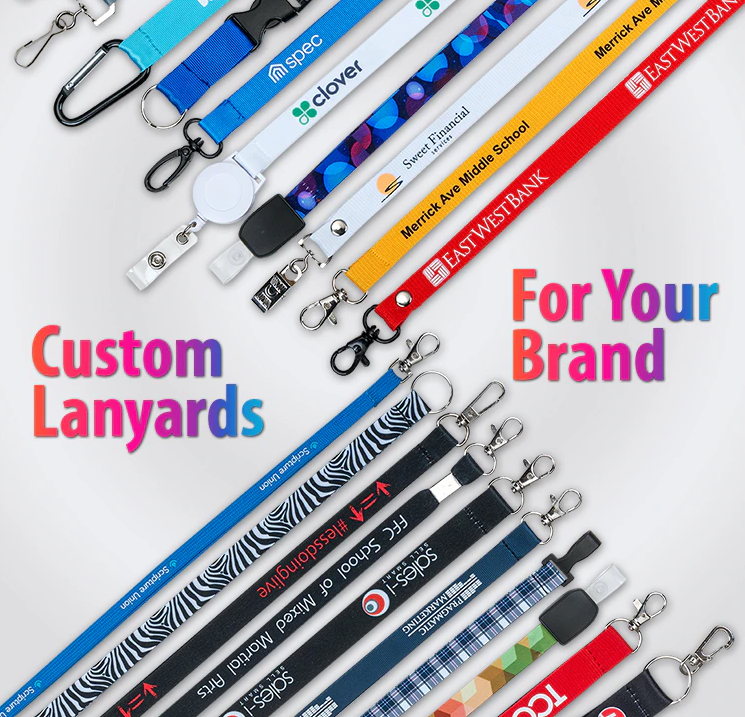
When it comes to getting cheap customized lanyards that genuinely match your preference and style, you must get them from a reputable source that is not only about the wide range of options but also has a proven track record of delivering high-quality lanyards. With FastPrintStar, you can explore a diverse section of customizable lanyard choices that speaks to your need and cater to your preferences. Our commitment to customer satisfaction and attention to detail ensures you get custom lanyards that exceed your expectations. Are you ready to experience owning your customized lanyard from the number one brand? Visit our website now to browse through our lanyard collections and start the journey toward your very own custom creation!

